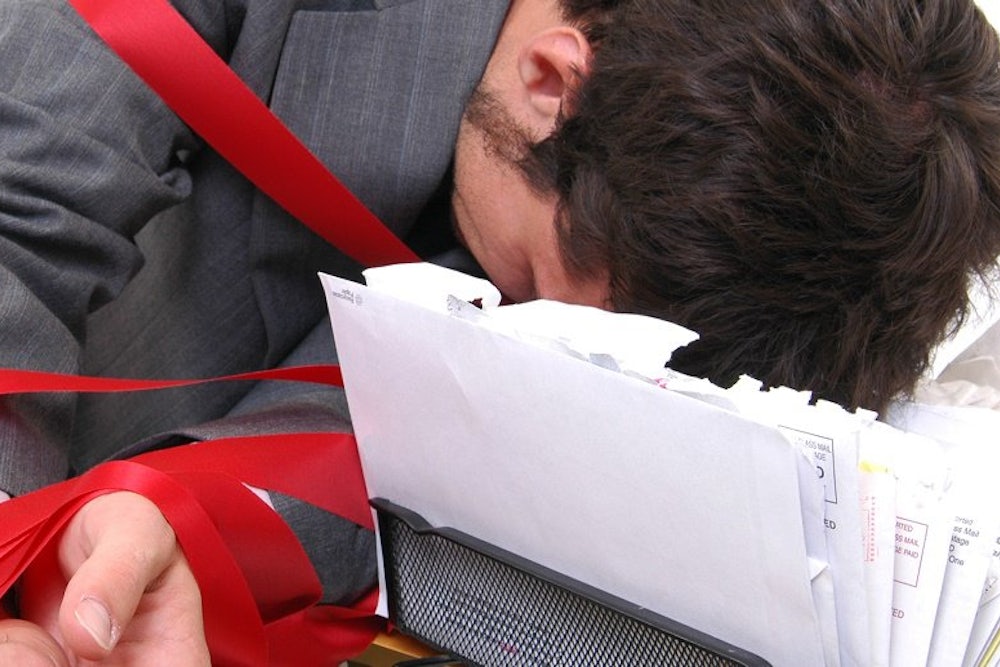Academics have long known that many state occupational licensing standards are onerous. To become a barber in Nevada, for instance, you will have to pass four examinations, pay a $140 fee and spend nearly two-and-a-half years in classes and apprenticeship. In fact, Alabama is the only state that does not have occupational licensing requirements for barbers. All to cut hair!
It would make sense that poor Americans in Alabama have an easier time becoming a barber than those in Nevada do. Now, we have the data to back that up. In a soon-to-be-published paper, Stephen Slivinski, a senior economist at the Goldwater Institute, finds that states with strict occupational licensing standards have lower levels of low-income entrepreneurship.
Slivinski used two different data sets, one from the Kaufmann Institute on low-income entrepreneurship and a second from the Institute for Justice on occupational licensing standards. The former compares a state’s number of low-income entrepreneurs—people who are self-employed like many barbers or taxi drivers—with its low-income population. By that metric, Colorado has the most low-income entrepreneurs; 7.5 of every 1,000 low-income Coloradoans report that they are self-employed. Mississippi has the fewest with just one out of every 1,000.

Slivinski then used the Institute for Justice data to see how many, out of 51 low-income occupations, states license. For instance, Louisiana licenses 41 of those 51 jobs, the highest rate in the country. Five different states—Indiana, Kentucky, Ohio, South Dakota, and Vermont—tie for the least restrictive occupational licensing regimes, with licensing requirements for just eight of the 51 low-income occupations.

He then compared each state’s rate of low-income entrepreneurship with the percentage of low-income occupations licensed there, while controlling for other explanatory factors like the percentage of the male population and percentage of the state’s population that is Hispanic/Latino. It was particularly important to control for the latter variable because low-income entrepreneurs, it turns out, are disproportionately more likely to be Hispanic or Latino. That means states with high populations of Hispanics and Latinos were likely to have higher rates of low-income entrepreneurship, regardless of the occupational licensing standards.
But that wasn’t always the case. “A state like Arizona has a higher than average percent of Latino population and actually has a lower than average rate of entrepreneurship among the Hispanic and Latino workers,” Slivinski said. “So the question became, why is that the case? Can you explain it with other factors? Sure enough, occupational licensing turns out to be one of the stronger explanatory factors in the data.” In other words, states with more onerous occupational licensing standards had lower rates of low-income entrepreneurship.
Why do some states have such varying levels of occupational licensing standards? It’s largely about crony capitalism. Incumbent businesses—in this case, incumbent low-income entrepreneurs—lobby their state legislatures to erect barriers to entry in their field on safety, health or some other ground. Those reasons generally are flimsy. The 29 states that don’t license tour guides do not appear to have a problem with huge numbers of ill-informed or lost tourists, for instance. But those new barriers to entry, generally in the form of educational requirements and fees, reduce competition for the incumbent businesses. That’s not good for consumers or aspiring, low-income entrepreneurs—but it’s great for the incumbent businesses.
“There’s virtually no public health or safety justification for any of these things,” Slivinski said. “The question is how do you explain that. It’s largely because of what you might call cronyism or barriers to entry being too high to keep out competitors.”
Slivinski suggests that occupational licensing regulations should sunset after a period of time and require those advocating extending the licenses “to prove the benefits of the regulations outweigh the costs.” Even better, he says, would be a system of private certification. “A key element here is that these organizations would not be able to prohibit someone from practicing an occupation,” Slivinski writes. “The legal regime would instead prohibit anyone from claiming a certification they indeed do not have.” In other words, the government would have the power to prosecute fraudsters.
Private certifiers would compete with one another to offer reliably, constructive information to consumers. “[Private insurers] have an interest in having the largest number of practitioners carrying their certificate but still keep the integrity of that certification high,” he writes. It’s an interesting idea. My biggest concern was the possibility that too many certifiers enter the market, making it harder for consumers to know which certifiers are credible and which are not. Slivniski shared that concern.
“Maybe this is a bad example considering we’re coming off the financial crisis but the SEC and the bond rating agencies is a good example of this,” he told me. “There are only about three or four bond rating agencies. There could be more. There is no good, compelling market reason why you couldn’t have more bond rating agencies. But the SEC and the Federal Reserve decided that we’re going to have a few certified, big-name [bond rating agencies] that most people can bring their bonds too—if you don’t like the S&P, you can go to Moody’s.”
He’s right that bond rating agencies are not the best example. But the industry shows, in principle, how private certification can work. To avoid a similar failure as happened to the bond agencies before the financial crisis, Slivinski suggests a slow phase-in—“This is not something you flip a switch and do overnight”—with frequent checks on how robustness of the certification. That would require some government involvement still but on a much smaller scale than currently exists with the current occupational licensing system.
“The first step has to be to create an environment for market certifiers to develop and emerge,” he said. “Right now there isn’t anything like that. One way to do that would be to, especially on the lower levels with things where there’s clearly no real public health concern, like the board of cosmetology, let them slowly experiment with some other certification regimes. And let’s see what happens.”
